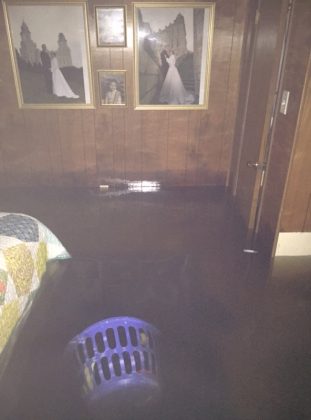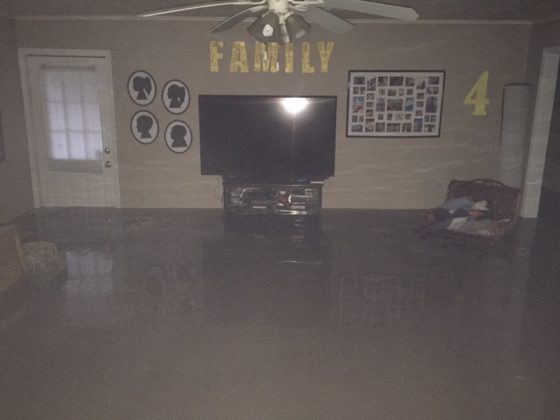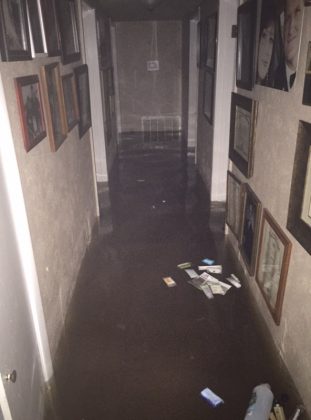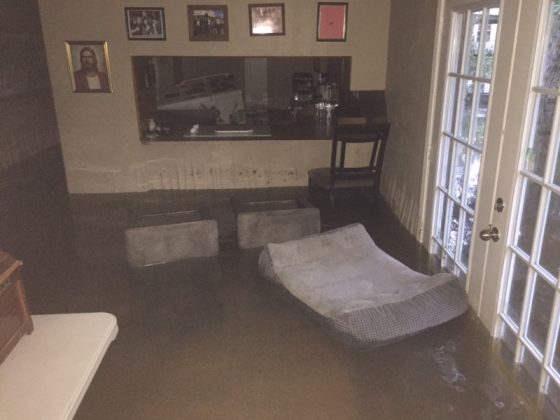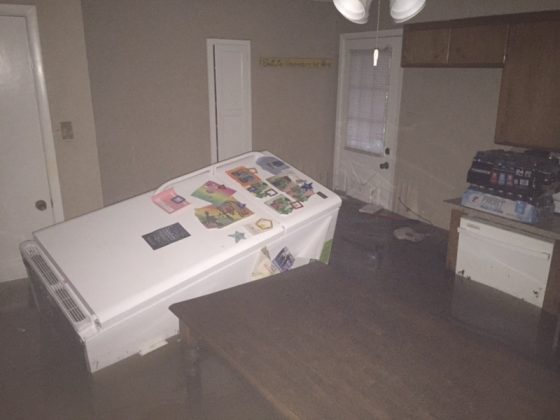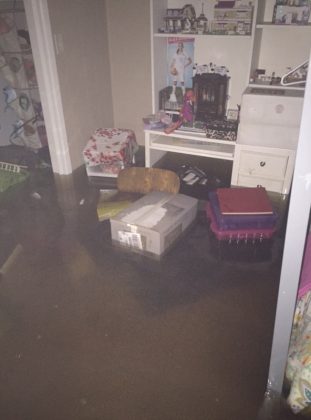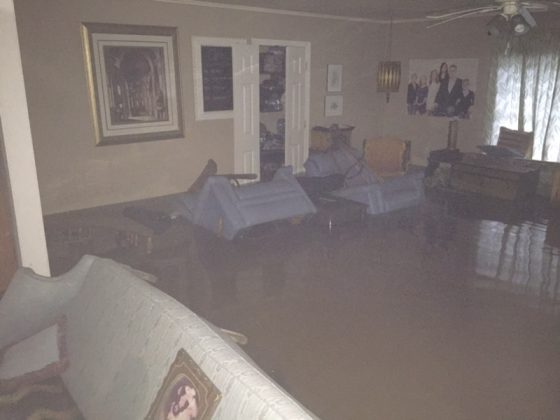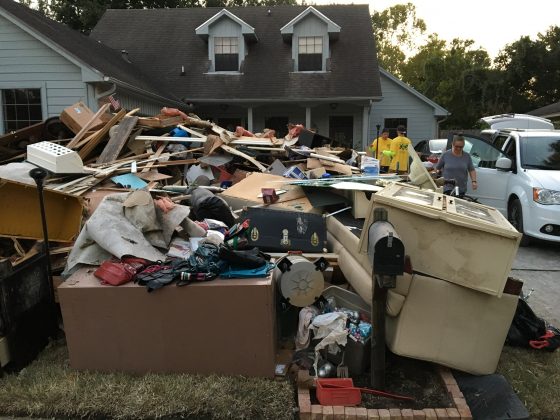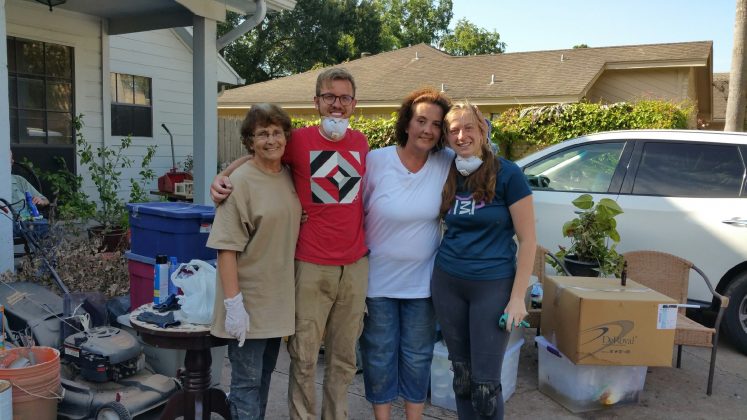The floodwaters were waist high as Capt. Jacob Shillig and his team of soldiers drove down the street in their Humvee as relief responders for Hurricane Harvey.
“You are just precariously driving through (the floodwaters) hoping that your vehicle, which is designed to handle this, doesn’t have any problems,” Shillig said.
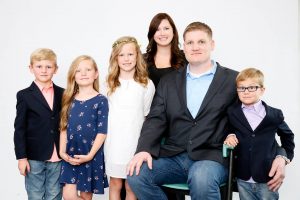
Shillig and his family live in Vidor, Texas, and were one of the first to evacuate prior to Hurricane Harvey. Shillig, a captain in the National Guard, was asked to be the medical operations officer for a task force covering affected Texas cities near Vidor.
“I’ve been training in the National Guard for 12 years to do this job, but I actually was in a situation where I was a part of the guard unit of the state the disaster happened in.”
As medical operations officer, Shillig assigned doctors, nurses and combat medics their missions and assessed what each city’s medical needs were.
“In a disaster, it’s all about medical response, saving people’s lives and rescuing people,” Shillig said.
Since Shillig’s mission included his own home, he stopped by to assess the damage. About three feet of water filled his home, with signs of the water being at a high point of about 42 inches.
“Our house was pretty much done for at that point,” Shillig said.

Shillig said the floodwaters have since receded and Mormon Helping Hands is helping those affected by the hurricane, including him and his family.
BYU alumna Lauren Fine volunteered with her husband for Mormon Helping Hands in Houston.
“It was a new level of realizing how difficult and devastating this was, but really cool to see how much people were there for each other,” Fine said.
A Category 4 hurricane, Harvey hit 200 miles of land and brought up to 52 inches of flooding and rain to some areas of Texas. The death toll for Harvey is currently at more than 80 people, but could change within the coming weeks as more information regarding casualties comes in.
Fine and her husband spent a weekend in Houston volunteering. Many of their daily tasks included stripping drywall, floors and removing anything in the house that was damaged.
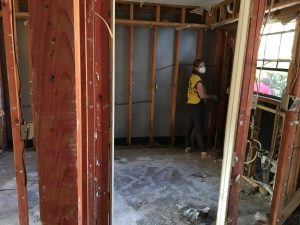
“Basically we were the demolition crew,” Fine said.
Shillig said it was easier to see what could be salvaged once his house dried.
“When the floodwaters get that high, the sewage from all the city sewage starts to seep up. So everybody’s houses had toxic sewage water sitting in their houses for a week,” Shillig said.
Fine said it was hard seeing people getting rid of things that were important to them or things they had made.
Mark Warnick from Fort Worth, Texas, also volunteered with Mormon Helping Hands in relief efforts for Hurricane Harvey. He and a crew of 15 people worked on two houses in two days, cleaning up anything exposed to floodwater. Warnick said he didn’t expect things to be as destroyed as they were.
Residents in Florida were also participating in relief efforts in the wake of Hurricane Irma, a Category 5 hurricane that made landfall in Florida as a Category 4 storm. Irma reached 185 mph winds and an estimated 42 people have been killed by the storm in the state.
Steve Horne, a resident of Jacksonville, Florida, said many people in his hometown spent time volunteering in the community to help clean up.
Horne said there is still plenty of work to do in Jacksonville. Many people were without power for about a week when Hurricane Irma hit and most could barely get to their front door without clearing the debris, according to Horne.
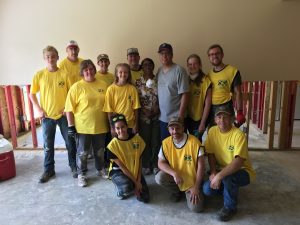
Shillig said donating items to relief funds is important when dealing with natural disasters such as Hurricanes Harvey and Irma.
However, Shillig said receiving donations can be complicated because those receiving them don’t have a place to put them.
“People want to give blankets, pillows, toiletries and clothes. But where are you going to put it all? You don’t have a home. You are essentially living out of your car,” Shillig said.
Shillig said donating money directly to families in need or volunteering during the cleanup and rebuilding processes can be great ways of helping out. Another way to help could be volunteering services through pro bono work, Shillig said.
Making donations to organizations such as the American Red Cross and the LDS Church’s humanitarian fund are great ways to help out, according to Todd Manwaring, director of BYU’s Ballard Center for Economic Self-Reliance.
Manwaring said one of the main issues with donations is that funds can dry up and victims of disasters will end up needing additional help three to six months later.
When a disaster is in the news, Manwaring said donations tend to flow in more because people are aware of the problems and text in money. Manwaring said the key to world-relief efforts is to recognize the initial need for relief, but realize the need will remain for quite some time after the tragedy.
“The bigger need is going to be in six months because everybody else will have left it behind,” Manwaring said.
For more information on how to donate or get involved, visit the American Red Cross, JustServe.org or the LDS humanitarian website.

